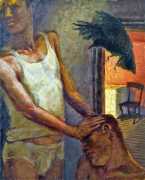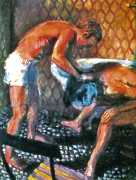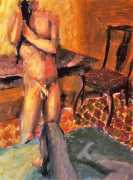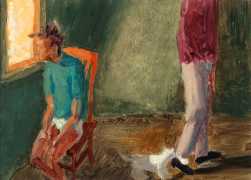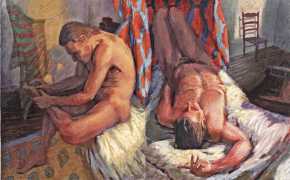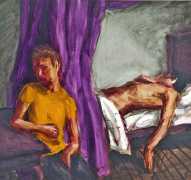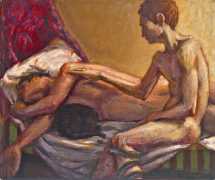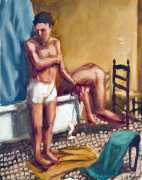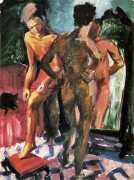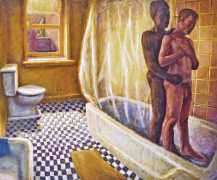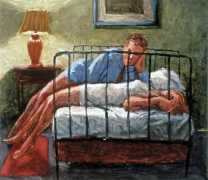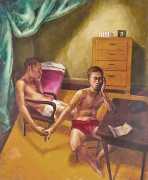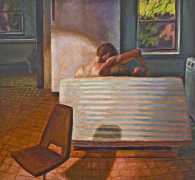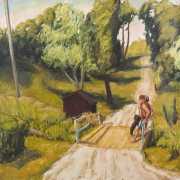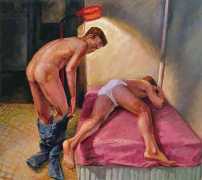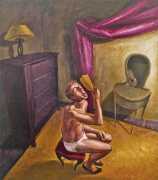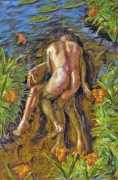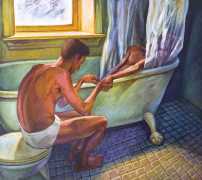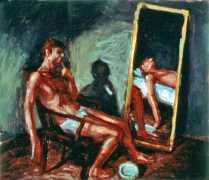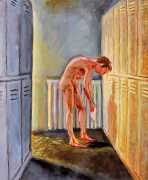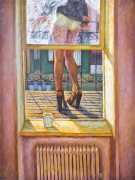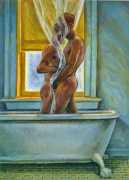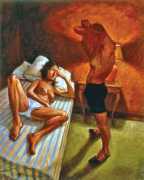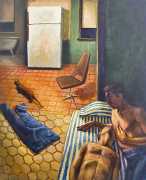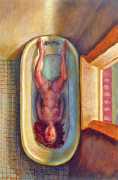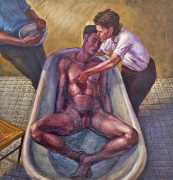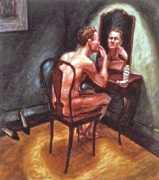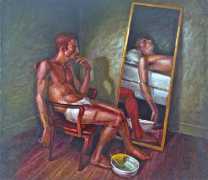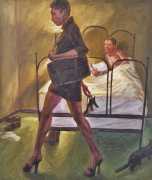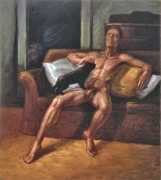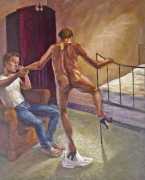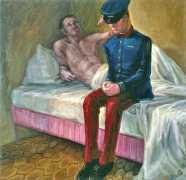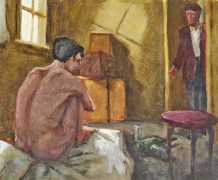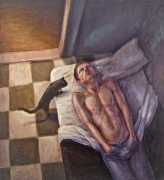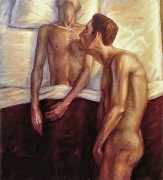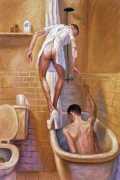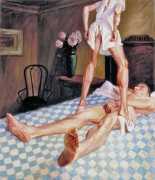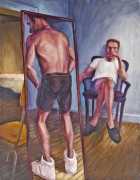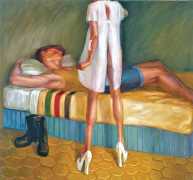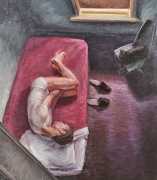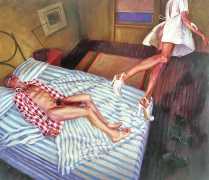 The American artist Hugh Steers grew up in Washington DC, and trained in painting at Yale University, New Haven, and Parsons School of Art and Design in New York. Before his death at 32 from AIDS-related complications, Steers created allegorical images of everyday life that captured the emotional and political tenor of New York in the late 1980s and early 1990s. Embracing representational painting and figuration at a time when such approaches were deemed unfashionable, his intimate compositions are poignant symbols of life under the spectre of AIDS.
The American artist Hugh Steers grew up in Washington DC, and trained in painting at Yale University, New Haven, and Parsons School of Art and Design in New York. Before his death at 32 from AIDS-related complications, Steers created allegorical images of everyday life that captured the emotional and political tenor of New York in the late 1980s and early 1990s. Embracing representational painting and figuration at a time when such approaches were deemed unfashionable, his intimate compositions are poignant symbols of life under the spectre of AIDS.
Deeply influenced by art history, Steers mined the western canon for inspiration to create intimate, surreal, and compelling paintings filled with elements that paid homage to a range of influential artists, including El Greco, Édouard Vuillard, Edward Hopper and Paul Cadmus. In an interview shortly before his death, the artist expanded on his approach, musing ‘I think I'm in the tradition of a certain kind of American artist – artists whose work embodies a certain gorgeous bleakness. Edward Hopper, Jackson Pollock, Franz Kline – they all had this austere beauty to them. They found beauty in the most brutal forms. I think that's what characterises America, its atmosphere, its culture, its cities and landscape. They all have that soft glow of brutality.’
We are very grateful to our Russian friend Yuri for introducing us to the work of this artist, and for supplying most of the images.


